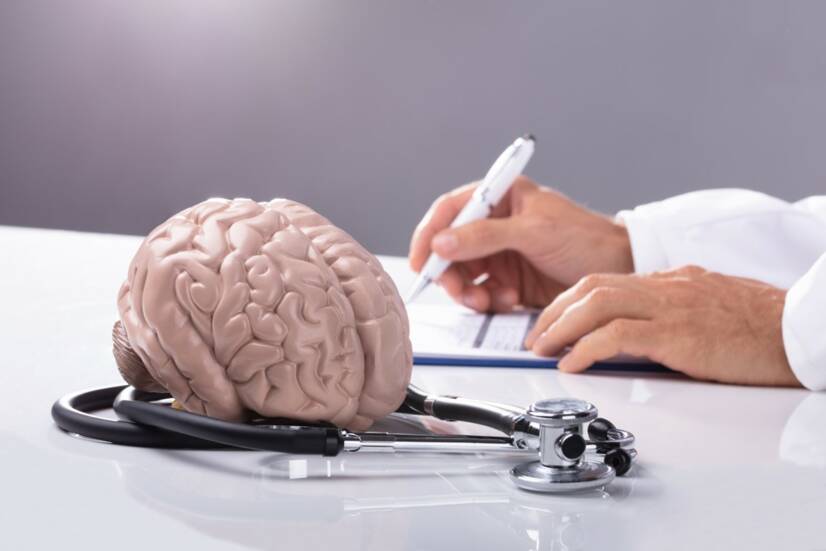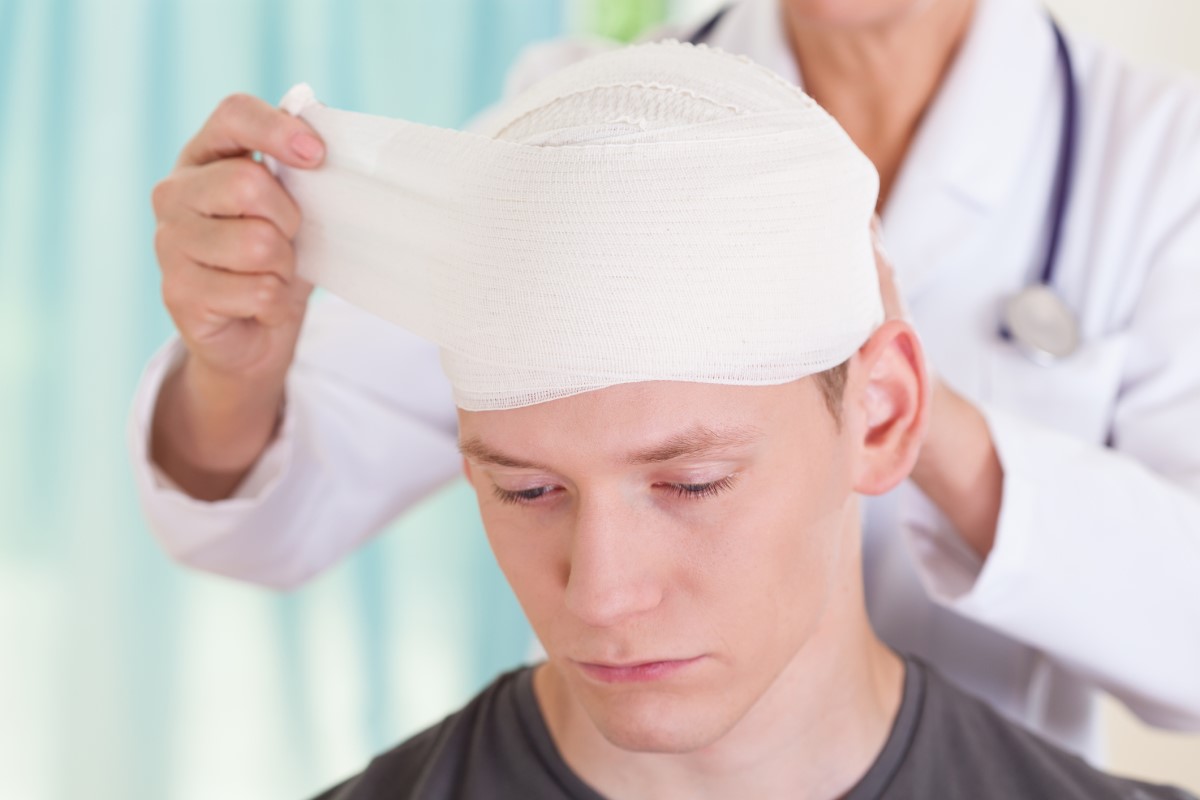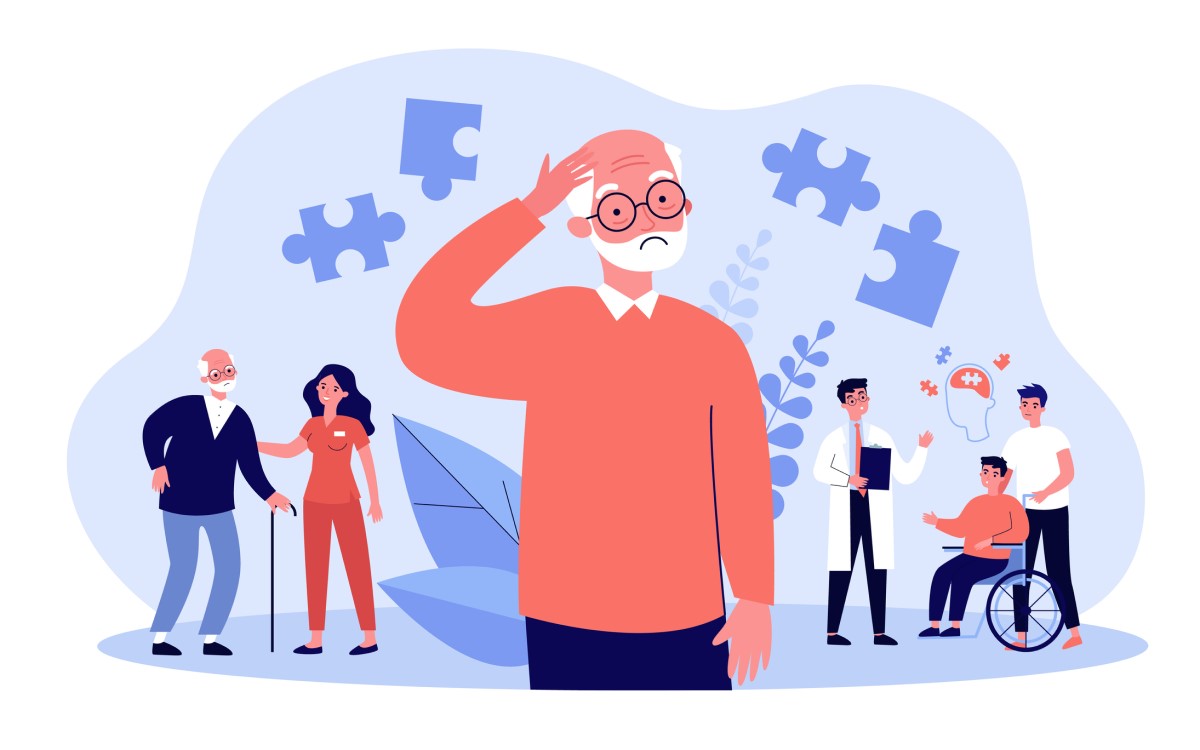- osevneu.jfmed.uniba.sk - Cerebrovascular diseases
- foliageographica.sk - What are the most common mechanisms of head injuries?
- solen.sk - Diagnosis and treatment of stroke
- solen.sk - Current views on the issue of mild brain injury
- solen.sk -First epileptic seizure - diagnostic procedure and indications for starting therapy
- alzheimer.sk - Alzheimer's disease
- neurodegenerationresearch.eu - Neurodegenerative diseases
- solen.sk - Pain and neuropathy
Welcome to the neurologist: the most common diagnoses in the neurological outpatient clinic

Welcome to the neurologist. We've looked at the most common diagnoses in the neurology outpatient clinic.
Article content
We took a look inside a neurologist's office to find out what patients and problems he or she encounters most often. Diagnosing and treating neurological problems is not easy.
The most common diagnoses can be divided into acute and chronic.
Acute neurological problems
Acute diseases require immediate diagnostic and therapeutic intervention.
Every neurologist knows their warning signs and knows that early recognition can save a life.
These are the following diseases...
Stroke
In the modern world, stroke is the 3rd most common cause of death, surpassed by heart disease and cancer.
It's divided into ischemic and hemorrhagic stroke.
It is also known professionally as ictus.
Ischemic stroke occurs when there is bleeding in a specific part of the brain tissue. The brain is the most oxygen-intensive organ. Therefore, anemia lasts only a few minutes. Brain cells die immediately and lose their function.
Inadequate blood supply of oxygen and nutrients occurs in the following cases:
- embolism, the expulsion of a blood clot, most often from the heart, from its atria in atrial fibrillation
- vasospasm, reflex constriction of blood vessels
- stenosis of a blood vessel, narrowing of a blood vessel and restriction of blood flow, especially in severe atherosclerosis
The key to early diagnosis is early recognition that it may be an iCMP (ischaemic stroke).
It often occurs in the home environment, suddenly, after exertion, agitation, heart palpitations. It can also occur unnoticed, in sleep or shortly after waking up.
These are the most common symptoms of iCMP:
- Unconsciousness
- headache
- dizziness
- muscle cramps
- sudden muscle weakness in the limbs
- tingling and tingling in the limbs
- visual disturbances to blindness
- blurred vision or light stimuli in front of the eyes
- double vision
- impaired orientation in space
- difficulty walking
- drooping of the corners of the mouth
- slurred speech, impaired articulation, so-called babbling
- nonsensical and inadequate answers to questions
- gross muscle tremors
We pay increased attention to people who have had a stroke in the past. There is an even greater risk if there has been another stroke within a year.
We also raise a warning finger for patients with these risk factors:
- high blood pressure
- Overweight
- diabetes
- dyslipidaemia
- sleep apnea
- smoking
- hormonal treatment in women, for example contraception
- high age
- family history of stroke
- alcohol abuse
A haemorrhagic stroke is a bleed in the brain. It's classified by where the blood builds up:
- epidural haemorrhage - above the meninges
- subdural haemorrhage - under the dura mater
- subarachnoid haemorrhage - blood leaks into the liquor ducts, between the pia mater and the arachnoidea, this is a massive arterial haemorrhage
Cerebral hemorrhage can occur during head trauma, after a severe blow, after great physical exertion, after childbirth. In predisposed cases, it can also occur during normal activities such as sneezing, coughing, sex, stool pressure and other activities that increase intra-abdominal pressure.
For example, the presence of an aneurysm, i.e. a vascular bulge in the brain, is a predisposition to bleeding.
We should be alert if a person reports an excruciating headache. He or she describes a strange sensation in the head, as if it were 'popping', has lost consciousness several times after an accident, or has symptoms of ischaemic stroke.
If suspected, the patient should be...
If a stroke is suspected, the patient should be examined immediately by a neurologist and referred for a CT scan or MRI.
Treatment is acute. It involves urgent transfer to a hospital intensive care unit.
Thrombolysis can be given within 4.5 hours of the onset of ischaemia. This is a treatment that dissolves the clot that has blocked the vessel.
Within 6 hours, a thrombectomy, a mechanical pulling out of the clot, can be performed.
If more time elapses, treatment is symptomatic. It includes antiplatelet therapy, blood pressure treatment, blood flow support and intensive rehabilitation.
TIA - transient ischaemic attack
This is a situation where the patient experienced symptoms of iCMP but it was only a transient neurological deficit.
In this case, the discomfort persists for a few tens of minutes or a few hours. It then resolves spontaneously. It leaves no neurological impairment. Even radiologically, there is no evidence of an infarct focus.
The principle of occurrence is the same as in full-blown iCMP. The difference is that in TIAs compensatory mechanisms occur early.
These may occur by equilibration of systemic pressure, dissolution of the thrombus by natural thrombolytic processes. Alternatively, there is collateral circulation that may compensate for acute vessel occlusion.
Even if the patient is not disabled, attention should be paid to the TIA undergone. The patient should be prescribed prophylactic antithrombotic and antihypertensive therapy or treatment of dyslipidemia.
Read also:
How to recognize stroke early + typical symptoms
How to recognize heart attack and stroke early? Fight for life
Head injury and concussion
Serious head injuries are caused by the following most common mechanisms:
- car accident
- gunshot wounds
- being struck as a pedestrian
- workplace accidents
- sports accidents, e.g. cycling, skiing, skating
- falls from stairs, ladders, beds and trees
- assault
The following types of injuries can occur in these accidents:
- injuries to the soft parts of the head
- fractures of the cranial vault and skull base
- fractures of the facial part of the head
- brain envelope injuries
- concussion
- brain contusion
- epidural haemorrhage
- subdural haemorrhage
- intracerebral haemorrhage
Concussion is caused by a direct blow to the head, face and neck. However, it can also be caused by a blow to another part of the body if inertial forces are transmitted to the brain area.
Such injuries to the brain lead to neurological disorders. They are short-lived and resolve spontaneously. In the acute phase of concussion, they result from a change in function rather than structural damage.
Characteristic symptoms include:
- unconsciousness
- memory impairment
- disorientation, confusion
- behavioural changes (e.g. slow reactions, repetition of the same questions, restlessness, shyness)
- retrograde (before the accident) or anterograde (after the accident) memory loss
- coma occurring within 2 seconds of injury (starting with a brief stiffness, followed by bilateral, often asymmetric twitches lasting up to 3 minutes)
- headache and dizziness
- nausea and vomiting
- insomnia, rapid fatigue
- hypersensitivity to light and noise
Some of these symptoms, such as behavioural disturbances, reduced performance, headaches, mood disturbances and insomnia, appear 1-2 weeks after the injury. They can persist for varying lengths of time.
In some cases, such as athletes, this recovery period can last 7 to 10 days. In normal people, it can last longer, 3 to 12 months.
Children are at increased risk of an even longer recovery period.

Repeated head injuries caused by concussion can lead to the development of a neurodegenerative disease, progressive tauopathy, also known as chronic traumatic encephalopathy.
Diagnosis includes a history of the injury and its mechanics, a CT scan of the brain showing no structural changes, and the onset of characteristic symptoms.
Treatment is symptomatic. It includes observation of the patient, mental and physical rest.
Epileptic seizure
The first epileptic seizure in life should always be properly investigated.
It is usually a dramatic convulsive seizure in which the person is unconscious. It is accompanied by myotonic clonic-tonic twitching of the body.
Not every epileptic seizure means that a person has epilepsy.
Sometimes seizures are provoked or acutely symptomatic.
They occur in association with acute brain disease, e.g. stroke or trauma. Epileptic seizures can also be caused by systemic diseases, e.g. intoxication or metabolic diseases.
Convulsive syncope and non-epileptic psychogenic seizures should be distinguished from epileptic seizures. These types of seizures have different causes and treatments.
Symptoms of an epileptic seizure:
- Comes on unexpectedly under normal circumstances
- is preceded by an aura
- lasts 1-2 minutes
- tonic, clonic-tonic and myoclonic convulsions
- eyes open, rolled up and to the side
- tachycardia
- redness in the face, possibly blueness
- leakage of urine
- biting of the tongue, oozing of foamy and bloody saliva
- confusion after a seizure lasting 1-2 minutes
Symptoms of convulsive syncope that distinguish it from an epileptic seizure:
- occurs in specific situations such as standing for long periods, hot environments, coughing, urinating
- lasts only 10-30 seconds
- a slow heart rate, called bradycardia, is more common
- the face is pale and sweaty
- biting the tongue is very rare
- confusion after a seizure lasts only 30 seconds
In the diagnosis are the most beneficial:
- Glycaemia tests
- inflammatory parameters
- blood count
- ECG
- acute brain CT with later addition of brain MRI
- EEG examination
- toxicological examination
- in case of suspected CNS infection, also a lymphatic examination
When deciding on treatment, the most important thing is to determine the risk of recurrence of seizures. If the seizure has occurred sporadically, preventive treatment is not necessary.
If a recurrence or the presence of epilepsy is suspected, the neurologist will initiate preventive treatment with antiepileptic drugs.
Regimen measures consisting of avoidance of provoking factors such as sleep deprivation and sleepless nights, alcohol excesses, smoking, strobes and excessive mental stress are important.
Chronic neurological problems
Chronic neurological problems require patience and time.
The neurologist sees patients regularly, over long periods of time, months, years and often for the lifetime of the patient.
Regular check-ups and treatment adjustments require a constant flow of new information and knowledge of the latest trends in the treatment of these chronic diseases.
Patients with these diseases are the largest group...
Spinal pain
The most common group of neurological patients are people who have spinal problems.
People who come bending in the trunk and holding their hands behind their back. They report a history of excessive physical exertion, carrying heavy loads, colds, playing sports in wet clothes, long travel, improper movement in the shower, working in the garden, etc.
The causes are many, but the result is one.
Abulging disc or muscle spasm of the paravertebral muscles.
They cause severe shooting pain.
If the problem is more severe, radiating pain to the extremities may be associated.
In cervical spine pain, the pain radiates either to the back of the head or under the shoulder blade, to the elbow or to the fingers.
In lumbar spine pain, pain radiates to the lower limbs, e.g. groin, buttocks, below the knee, little finger or thumb.
Interesting information in the following articles:
Vertebrogenic algic syndrome: Back pain and its causes and symptoms?
How is the cervical spine and vertigo related? What helps with dizziness?
What does back pain between the shoulder blades mean? The most common causes
3symptoms that accompany cervical spine pain. Do you know their causes?
Do you have cervical spine pain in pregnancy? Why is it so common and how can you learn to manage it?
In addition to an objective neurological examination, you may be referred for a CT scan of the spine or an MRI. If the examination shows a large disc herniation and your problems persist, prepare for hospitalization.
On an outpatient basis, you will be treated with analgesics such as metamizol, antiphlogistic agents (diclofenac and others), myorelaxants such as guaifenesin, magnesium. After the acute pain subsides slightly, you will not avoid physiotherapy and rehabilitation.

Headaches
After examination by a general practitioner, patients are referred and examined by a neurologist.
The neurologist will assess whether it is acute pain or a systemic disease manifested by headache.
Once these two causes have been ruled out, the primary cause is often migraine, cluster headache or tension-type cephalea. These are treated over the long term, especially with prophylactic treatment.
Symptoms that suggest that it may not be a primary headache:
- trauma
- ongoing sinusitis
- otitis media
- insect bite headache
- severe excruciating pain that the patient has never experienced before in his life
- pain accompanied by fever, drowsiness, stiff neck, meningeal symptoms
- headache with known malignancy
- HIV positivity
- ocular symptoms, double vision
- headache in a patient on anticoagulation therapy
Read also: Headache: is a GP visit enough or do you need a specialist?
Neurodegenerative diseases
Neurodegenerative diseases include:
- Alzheimer's disease (AD) and other dementias
- Parkinson's disease (PD) and PD-related disorders
- Prion diseases
- Motor neurone disease (MND)
- Huntington's disease (HD)
- Spinocerebral ataxia (SCA)
- Spinal muscular atrophy (SMA)
- Amyotrophic Lateral Sclerosis (ALS)
These diseases have in common the gradual degeneration and death of nerve cells. This process occurs gradually in certain areas of the brain. Depending on where the degeneration occurs, these diseases are divided into different subtypes.
The mechanism of these neurodegenerative diseases varies but has common features. For example, in all cases there is 'protein aggregation', i.e. an abnormal accumulation of certain types of protein in the brain (e.g. amyloid in Alzheimer's disease).
Specific groups of nerve cells are affected, e.g. dopamine cells in Parkinson's disease or motor nerve cells in ALS and Huntington's disease.
Other risk factors for their development include:
- oxidative stress
- inflammatory process
- 'cell death' or apoptosis
Diagnosis is made on the basis of clinical examination, paraclinical ancillary investigations and genetic tests. The diagnosis is only definitive after positive results of macroscopic and microscopic analysis of proteins and nucleic acids.
Currently, some new treatment options are emerging that could slow, stop or prevent nerve cell degeneration. New procedures are being tried, such as cell transplantation to replace degenerated cells.
The use of growth factors to improve the survival of remaining cells and immunotherapy to suppress the inflammatory response and cell degeneration could also be successful.

Neuropathy
These diseases are among the very common problems in the outpatient clinics of general practitioners and neurologists. They are diseases that are accompanied by pain.
The pain is chronic and analgesics are ineffective in managing it.
Neuropathic pain tends to be accompanied by the following unpleasant sensations:
- Paresthesia - tingling, tingling and abnormal sensations in the limbs.
- Dysesthesia - normal touch is perceived as unpleasant
- Allodynia - touch is perceived as painful but does not normally cause pain
- Hyperalgesia - increased sensitivity to a painful stimulus
These pains and symptoms arise as a result of damage to peripheral nerve fibres and impairment of their function.
Therefore, the causes of neuropathy are several. In particular, it is a concomitant phenomenon in systemic chronic diseases, e.g.:
- Metabolic neuropathies - diabetes mellitus, hypothyroidism, hepatopathy, renal failure, vitamin B12 deficiency
- Toxic neuropathies - alcoholism
- Infectious and inflammatory neuropathies - Lyme disease, syphilis, sclerosis multiplex
- Autoimmune neuropathies
- Paraneoplastic neuropathies - in malignant diseases
- Compressive neuropathies - disc herniations
- Hereditary neuropathies - Fabry disease
- Neuropathies in organ failure
Neuropathies represent a broad set of diseases and are divided into many subtypes.
The basic simple division is based on the extent of damage into:
- polyneuropathies
- mononeuropathies
- focal neuropathies
Several tests are available to diagnose neuropathies:
- Detailed history with emphasis on comorbidities, medications taken, family history, toxic substances.
- Neurological objective examination reveals mainly trophic skin changes, muscle weakness, joint deformities and absence of tendon-bone reflexes
- Electromyographic (EMG) examination may also reveal clinically silent neuropathies
- A liquor examination is performed when an inflammatory, autoimmune or malignant cause is suspected
The treatment of neuropathies is lengthy and requires patience on the part of the patient and the therapist.
Up to a quarter of patients with neuropathic pain do not have the necessary treatment and more than two-thirds are treated incorrectly.
The most effective drugs are antidepressants, antiepileptics and opioids.
In the first line, duloxetine, pregabalin and tricyclic antidepressants are the most widely used. The second line includes carbamazepine, gabapentin, tramadol and venlafaxine.
Interesting resources










